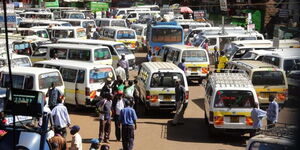Amid unpredictable fuel prices in the country, Kenyan drivers are devising ways to power their vehicles, with Liquefied Petroleum Gas (LPG) emerging as a popular option.
What was traditionally used as fuel to power Kenyan homes, LPG has emerged as an alternative fuel source for vehicles because of its lower cost and fairly cleaner combustion, but how does it work?
LPG, which is mainly composed of propane and butane, is stored as a liquid under pressure but generally burns as a gas. In vehicles, it is typically stored in a pressurised tank (usually in the boot/trunk or under the vehicle).
When the engine requires fuel, the LPG is drawn from the tank and through fuel lines to a component known as the converter or vaporiser. This converter reduces the pressure and turns the LPG into gas, then an injector or carburettor system is used to deliver it to the engine.
After entering the engine cylinders, the LPG-air mixture is then ignited by the spark plug, just like in a petrol engine. The resulting explosion pushes the piston, generating enough power to move the vehicle.
Cost
One of the biggest pros of using LPG in vehicles is fuel economy. LPG is generally cheaper than petrol. LPG offers roughly half the cost of petrol per litre, presenting significant savings for motorists, particularly commercial drivers who require large amounts of fuel daily.
Beyond the issue of cost, combustion generally produces less harmful emissions and particulate matter than petrol or diesel, making it a cleaner-burning fuel.
It is also important to note that some cars are factory-fitted to run on LPG, but in Kenya, most LPG vehicles are a result of aftermarket conversions, allowing drivers to switch between petrol and gas depending on which fuel source is available and more economical at a given point in time.
For aftermarket LPG installation, the initial cost of converting a vehicle to LPG typically ranges from Ksh70,000 to Ksh150,000, depending on the vehicle and system used.
Dangers
One of the more obvious dangers of using LPG-powered vehicles is the high possibility of explosions or fires. If there is an undetected leak in the system, it can accumulate in enclosed spaces and become highly flammable or explosive.
Are LPG Cars Allowed in Kenya? What the Law Says
Despite the pros of using LPS, the legality of LPG conversions in the country has also been a subject of confusion. As per the Kenyan Traffic Act, Section 51, the modification to fundamental parts of a vehicle, like its fuel system, must officially be approved and reflected on the vehicle's logbook.
Failure to do so renders the vehicle non-compliant with road regulations, and violators can risk hefty fines and up to a three-year jail term. Their vehicle also runs the risk of getting impounded.
Another legal issue brings insurance into focus as a quick spot check by Kenyans.co.ke revealed that many insurance companies are unwilling to cover vehicles that have undergone fuel system conversions, especially if they are not approved by the National Transport and Safety Authority (NTSA) and the Kenya Bureau of Standards (KEBS).
The NTSA and KEBS, meanwhile, have started developing a regulatory framework for LPG use in vehicles, which includes licensing approved conversion workshops, developing safety standards and inspecting LPG installations for compliance.
So, should you go for an LPG-powered vehicle? The answer really depends on a number of factors. Since the infrastructure around the LPG cars in Kenya is fairly limited, one's best bet to save fuel is to opt for electric vehicles or hybrids.












